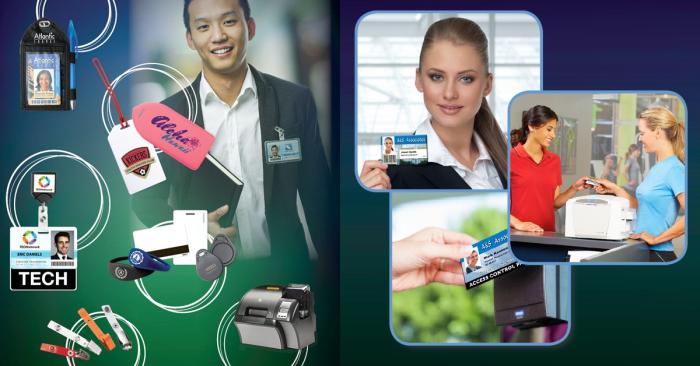How to Create Unique Visitor Badges
January 02 2020

If you thought a visitor badge meant an adhesive label with "Hello, my name is…" on which visitors hand write their name, it's important to know that you have options. Dozens of options. And the option you choose depends on your security needs and a few questions to answer before making your decision.
The following simple questions will help you decide what type of visitor badge best serves your needs.
Question #1: What level of security do you need?
Schools, hospitals, and companies with valuable intellectual property that have a steady stream of visitors every day need more security. You can choose between expiring and non-expiring visitors' badges depending on your needs.
Expiring badges use intricate technology that changes the look of the visitor badges over time. For example, some expiring badges change colors or after a period of time show "Expired" or "Void" on the face of the badge. It offers instant recognition when a visitor's allowed time at your facility has expired. You can choose from a variety of time frames for expiration, from half a day all the way to 30 days for some cases such as contractors.
A non-expiring badge doesn't have that wonderful technology but is a more affordable option. You can use different colored badges for days of the week or to represent restricted areas. The drawback is there's nothing to prevent people from reusing that badge in the future. So, if security is important, this option offers little security.
Question #2: How will you issue badges?
You have a range of options from visitors’ hand-writing their names on badges to issuing printed badges personalized with visitors' names and photographs. And the cost per badge differs, with the printed photo ID badges being most expensive.
This question relates closely to your security needs because the more personalized a visitors' badge, the harder they are to counterfeit or forge. If you have contractors who work on site for months at a time, you need something more identifiable than an adhesive badge and perhaps something more professional.
It also depends on how many visitors' badges you issue. If you have hundreds or thousands of visitors, you need something you can issue quickly that makes it easy to identify who belongs and who doesn't.
Question #3: Do your visitors have different roles?
Some organizations need to distinguish their visitors by the roles they play. For example, you may have contractors who work on site for months at a time and volunteers who spend several hours or days at your facility. If it's important to distinguish by roles, you can choose pre-printed visitor badges with titles like "CONTRACTOR" or "VOLUNTEER" for example.
Hospitals find that badges distinguishing staff from "Volunteers" and "Guests" helps them manage security better. It explains the nature of why the cardholder is on site, and different colors and role assignments help staff know exactly who that person is and where they should/shouldn't be.
If your visitors are all "guests," this won't apply to you. You can choose blank badges that are slightly lower in cost.
Question #4: How should visitors wear their badges?
Do you want to offer an easy adhesive badge to your visitors? Or if security is high and your visitors' badges need to restrict access, you might need to issue cards on a badge reel that visitors can easily access and show security.
Some options for more permanent badges than the peel-n-stick are cards with a slot that makes them easy to attach to a plastic clip, strap clip, lanyard, or badge reel. How you expect your visitors to use their badges should direct the attachment you choose.
Again, your security needs should direct how your visitors wear their badges. For example, if security is important, you need something more secure than an adhesive badge. While these options are slightly more expensive, they give you options that the cheaper adhesive ones don't.
Question #5: Do you need to track and report on visitors?
If you answered "yes" or think you might need to in the future, you need an integrated visitor management system. The manual sign-in log of yesteryear is outdated and extremely unsecure. Here's why:
- Check-in is incredibly slow when people manually sign in
- It's easy to forge a name
- It's unprofessional and sometimes unreadable
- It doesn't let you easily flag people who shouldn't have access to your facility
A visitor management system lets you personalize each badge with useful information. It also connects to other databases to let you scan for those you must bar from entry. In addition, it can track exactly who is on site in case of emergency. This could save lives if emergency response personnel need to evacuate everyone.
Final thoughts
Creating unique visitor badges don’t need to take up much time. Templates, visitor management systems, and databases can help you set up an easy-issuance program ahead of time. The result is a more secure environment for your employees, students, staff, visitors, volunteers, contractors, and others.
If you're still uncertain how to create unique visitor badges, reach out to an Idesco ID Expert at 212-889-2530. We'll walk you through the many options and help you pick the right solution that meets your security needs, your budget, and your current and future capabilities.
Add New
Comments
no comments found